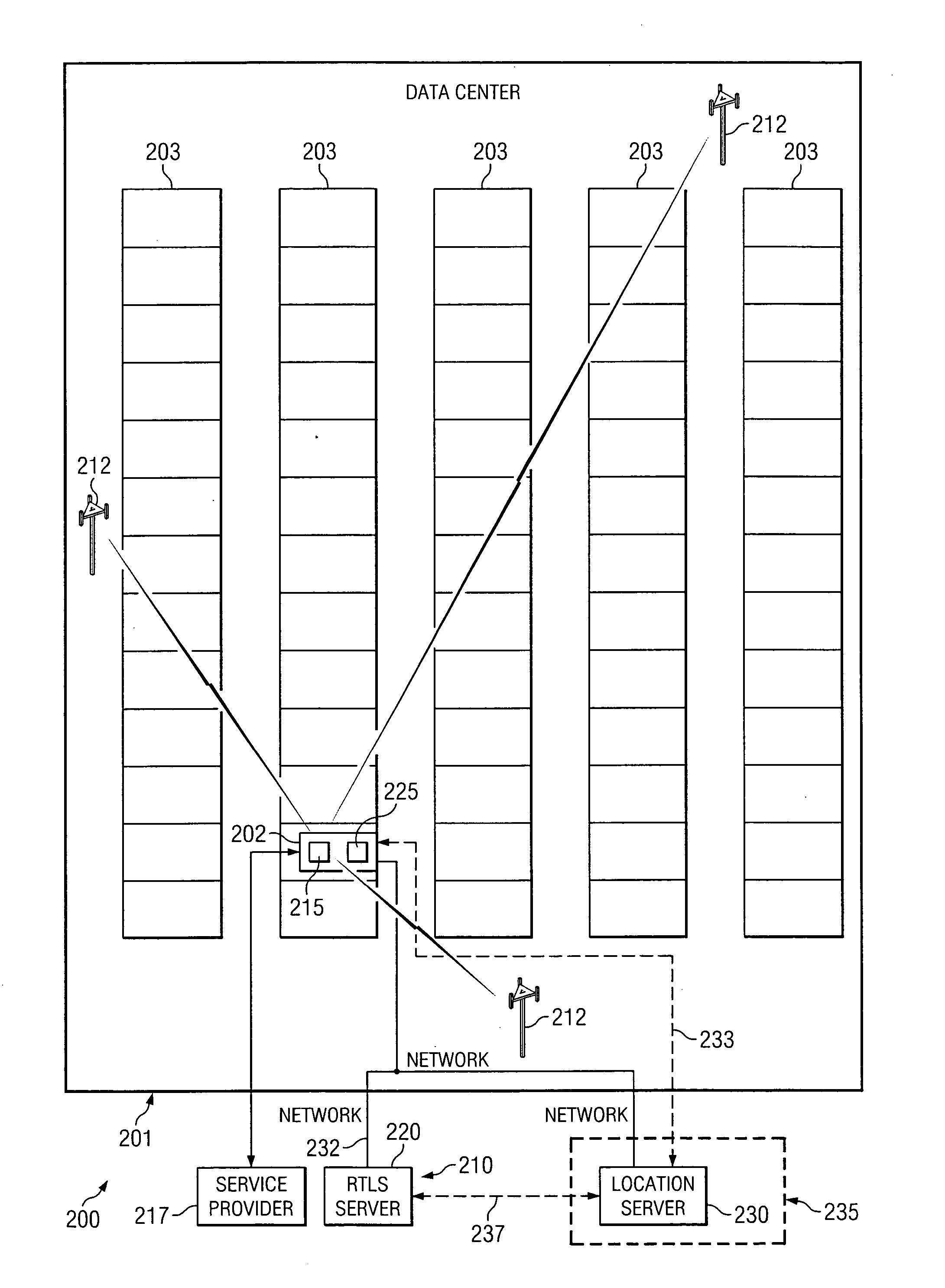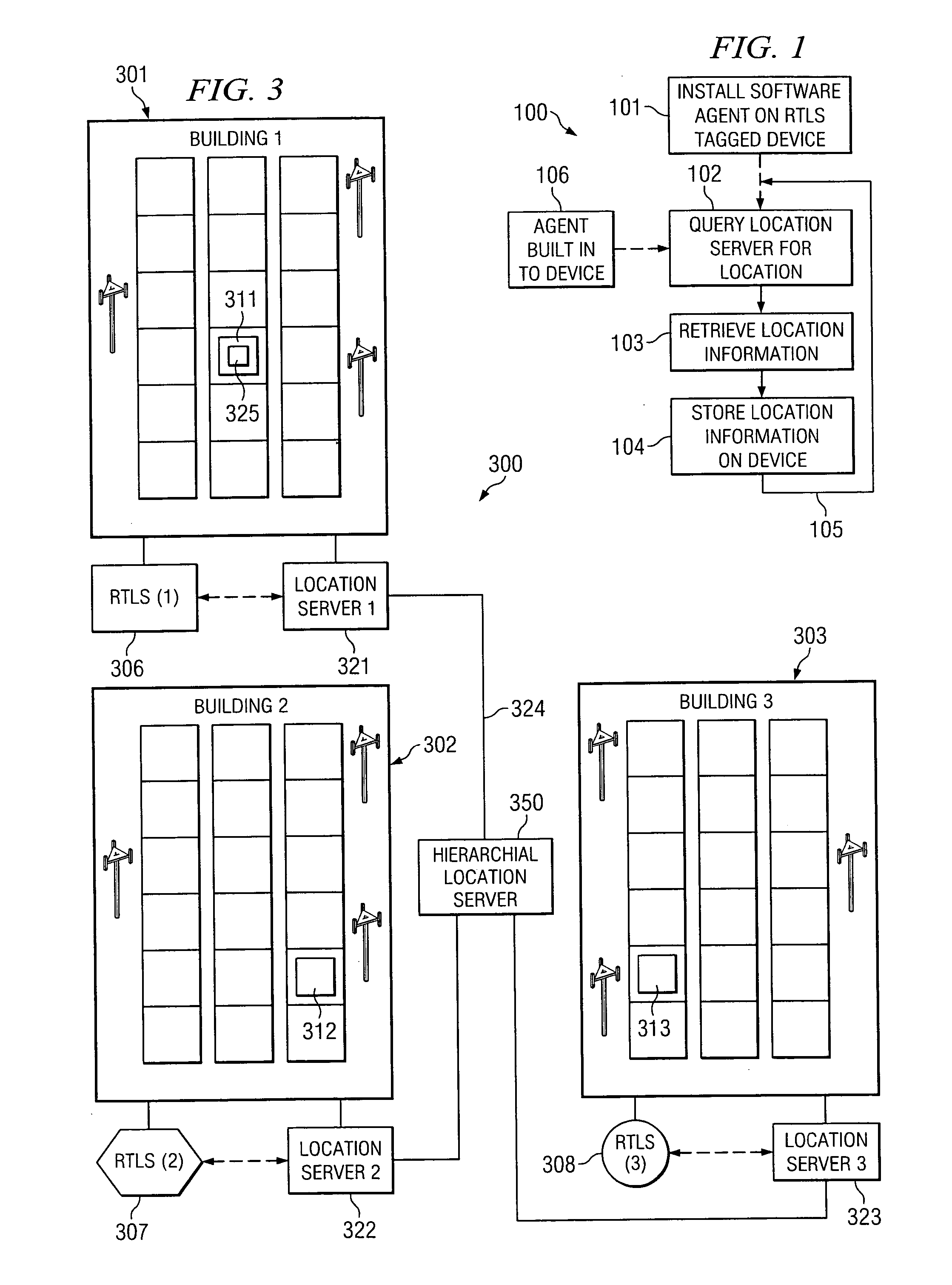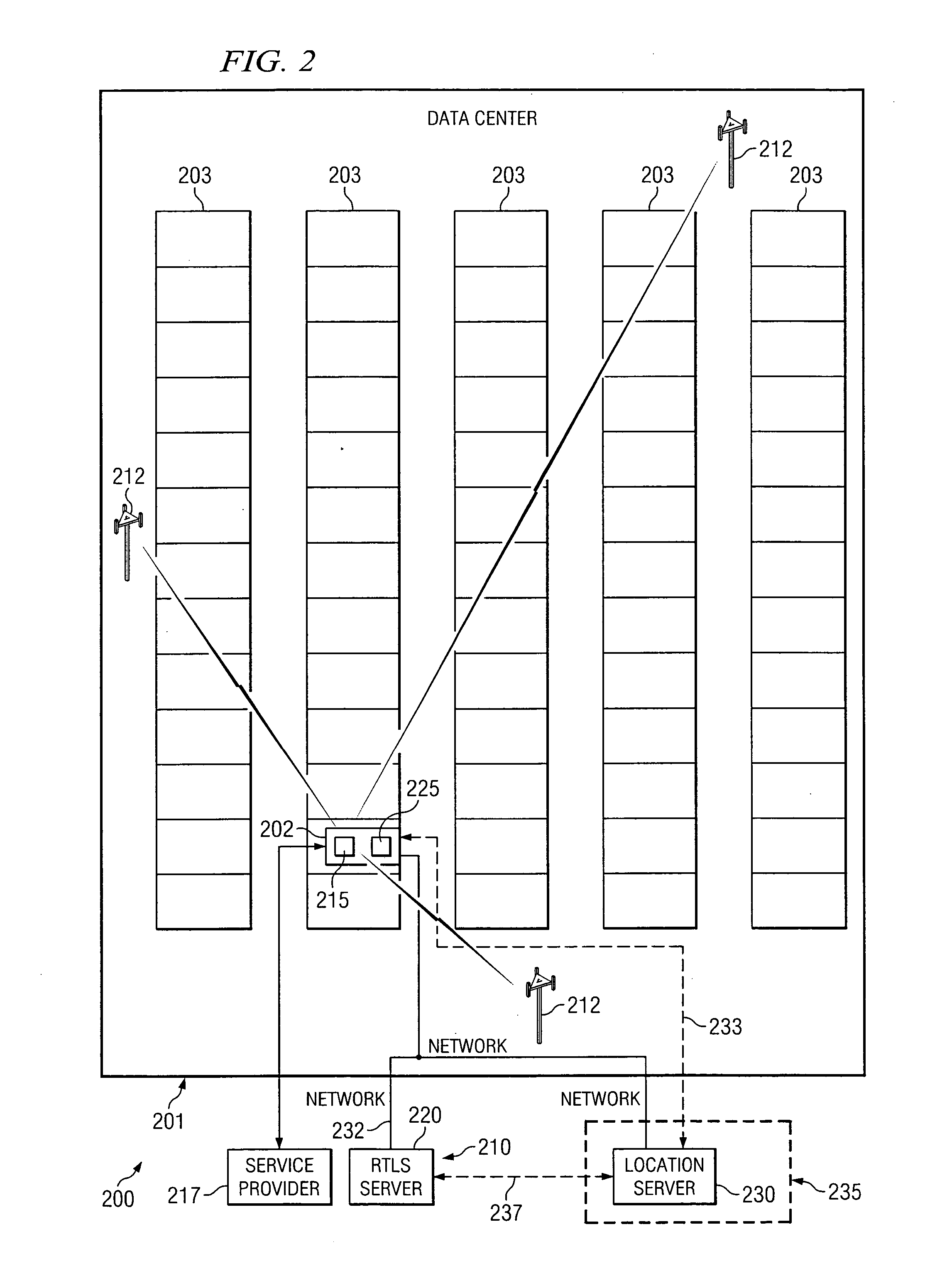[0009] Most existing real-time
location systems employ a centralized server on which to store
location data, in the aforementioned
central database. One
advantage of the present invention is that if that server is unavailable, the devices themselves have their last known location information. Therefore, a user that has access to a device can access location information for that device.
[0010] In some embodiments,
software on a tagged object periodically seeks out, from the
tracking system information repository, the device's location and programs that into the SNMP variables of that object. In other embodiments, the tagged object, as part of its boot procedure, queries the
tracking system information repository for its location and stores this location internally. In the case, for example, of a device on which a
software agent cannot be running at all times, the device may be able to find its location by running an application at boot, as a part of its boot procedure. Both embodiments may be combined, in that an object can find its location at boot and periodically thereafter update that information, or either embodiment can be used separately.
[0011] In various embodiments,
software of the present invention directly queries a tracking system server. In other embodiments where no single RTLS system covers
a domain, a hierarchical or
hybrid server that can query all the RTLS servers in the domain may be employed to perform hierarchical searches and similar functions. For example, a device's previous location may be known, so the hierarchical server may start with the RTLS system associated with that location and then work outwardly through the domain, rather than querying all tracking system servers in the domain. When several real-time
location systems are employed throughout, for example, a campus, one system in, for example, each building, would have a server in each domain (building). These domains may be set up in hierarchies, similar to the
domain name system of
the Internet, for example. A device would initially query its last known local location server, and if that location server was unavailable it would then be redirected to another location server upward in the hierarchy until it found the authoritative location server for itself. Particularly, in accordance with such an embodiment, the hierarchical server will query the next closest server and work outwardly in a circular pattern similar to
the Internet's Domain Naming
System (DNS) hierarchy.
[0012] An
advantage of the present systems and methods is that the
location data is automatically updated on the devices, and the device is thus “
self aware”. Another
advantage of the present systems and methods is that since devices are “aware” of their own location, if they are moved, the system does not need to be manually updated. This system takes advantage of any real-time location system that is already in place and updates the device itself. Also, since the information is stored in the device's MIB, or the like, the device is “aware” of its location even when the location system is temporarily down. Another advantage of the present invention is that when set up in a hierarchy, it is able to function across multiple real-time location system domains.
[0013] Another advantage is that multiple different, possibly even physically incompatible,
location systems may use or make concurrent use of the present invention. For example, two companies, which have each set up real-time location systems, may use different location system products. For example, one company may use an
infrared system and the other a radio or GPS based system. If the companies merge, or merge some of their resources (equipment), devices start migrating between company campuses. Once the companies install the physical component(s) or tags needed to track the devices, then a dual tagged device can be located across either system yet the software of the present invention does not have to be updated to work with another location system. The software of the present invention uses the same protocol and the local servers integrate the heterogeneous location systems.
[0014] If a channel is provided via which the location server can contact the device directly, a device may be enabled to react to movement of the device, whereas in a manual system or in all the existing location systems, the device would “know” nothing about its movement. Regardless, under the present system and methods, as long as the device is powered back up, it will be aware of its new location. However, a battery powered device such as a
laptop computer might be continuously aware of its location. Resultantly, the present invention might also function as a
security system or to supplement a
security system. For example, a
laptop that has been set-up to alert the present system if it leaves the building, or otherwise defined area, as it leaves the building or area it can alert the system of its departure.
 Login to View More
Login to View More  Login to View More
Login to View More 


